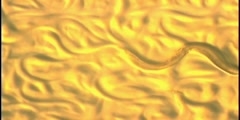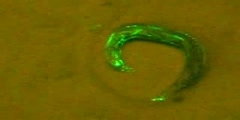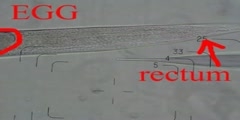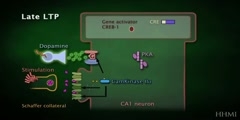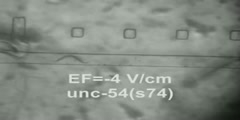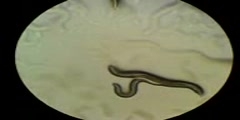Long lived C. elegans Mutants
This presentation shows the effect of daf2 mutation on c. elegans life span. It is pretty cool because with single mutation they even increased the life span more than twice. i believe there was also another gene called daf16 was also affecting life span but she does not mention that one here. here is info about c. elegans if you like to read: C. elegans is a eukaryote, which means that it shares cellular and molecular structures (membrane bound organelles; DNA complexed into chromatin and organized into discreet chromosomes, etc.) and control pathways with higher organisms. C. elegans is a multicellular organism, which means that it goes through a complex developmental process, including embryogenesis, morphogenesis, and growth to an adult. Thus, biological information that we learn from C. elegans may be directly applicable to more complex organisms, such as humans, which are somewhat more refractory to laboratory scrutiny. About 35% of C. elegans genes have human homologs. A homolog is a DNA or protein sequence that is similar to another DNA or protein sequence because the sequences have common ancestry. The definition of a homolog includes common ancestry, but, in practice, we often INFER that two sequences are homologs by similarity of sequence. We believe that the only plausible way for two sequences to share extensive similarity is by having a common ancestry. Remarkably, it has been shown repeatedly that human genes replace their C. elegans homologs when introduced into C. elegans. Conversely, many C. elegans genes can function similarly to mammalian genes. The C. elegans genome size is relatively small (9.7 x 107 base pairs or 97 Megabases), when compared to the human genome which is estimated to consist of 3 billion base pairs (3 X 109 bp or 3000 Megabases). The entire C. elegans genome has been sequenced. Furthermore, several novel molecular biological techniques exist for C. elegans experimentation that are not available to researchers studying higher eukaryotes. For example, manipulation of the genome by adding, removing, or altering specific genes occurs by relatively routine procedures. C. elegans is easy to maintain in the laboratory (in petri dishes) and has a fast and convenient life cycle. Embryogenesis occurs in about 12 hours, development to the adult stage occurs in 2.5 days, and the life span is 2-3 weeks. The development of C. elegans is known in great detail because this tiny organism (1 mm in length) is transparent and the developmental pattern of all 959 of its somatic cells has been traced. Read more: http://avery.rutgers.edu/WSSP/StudentScholars/project/introduction/worms.html
Channels: Genetics Caenorhabditis elegans
Tags: Long lived C elegans Mutants daf2 Celegans
Uploaded by: RobertHooke ( Send Message ) on 24-11-2010.
Duration: 5m 4s

